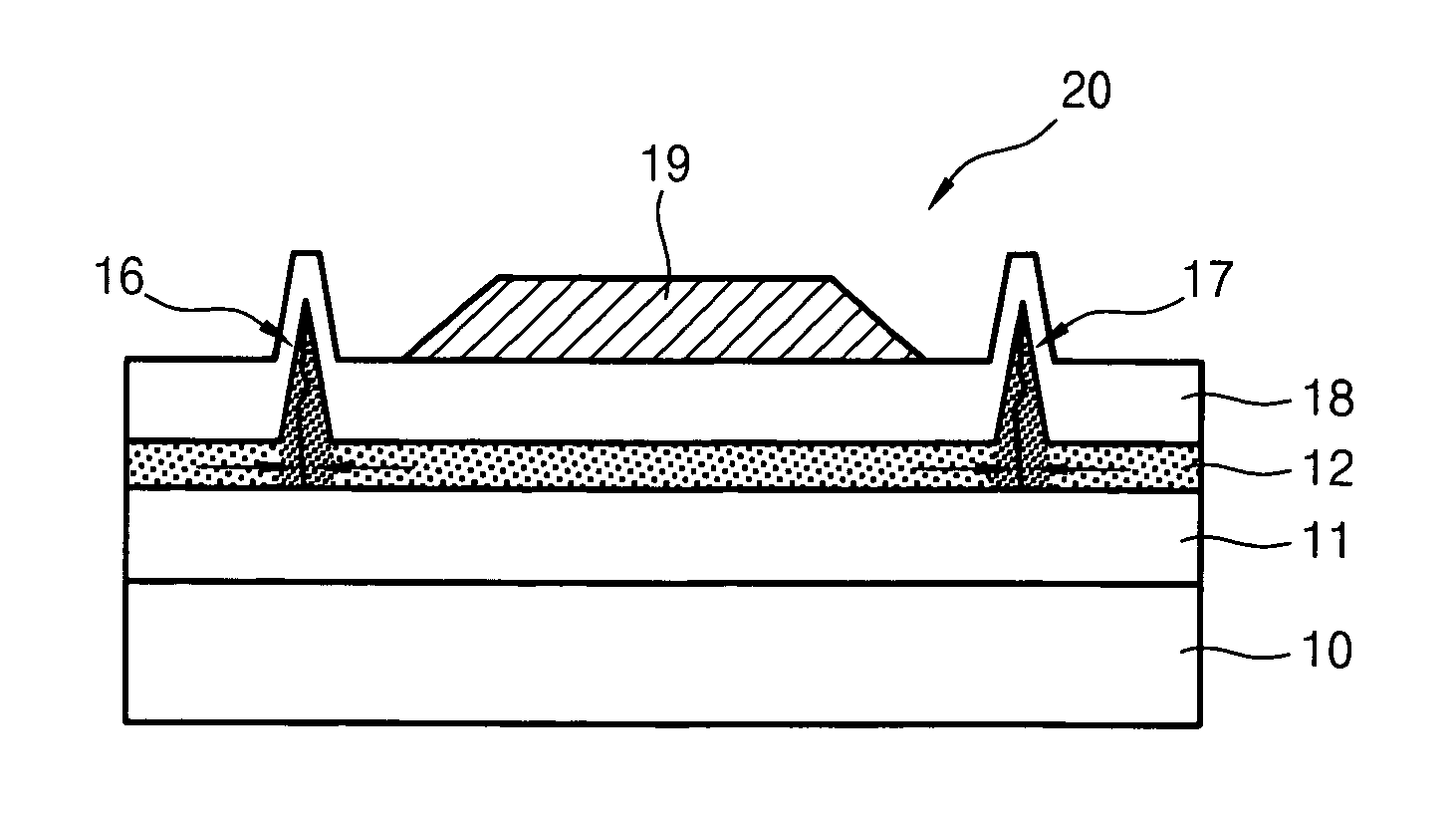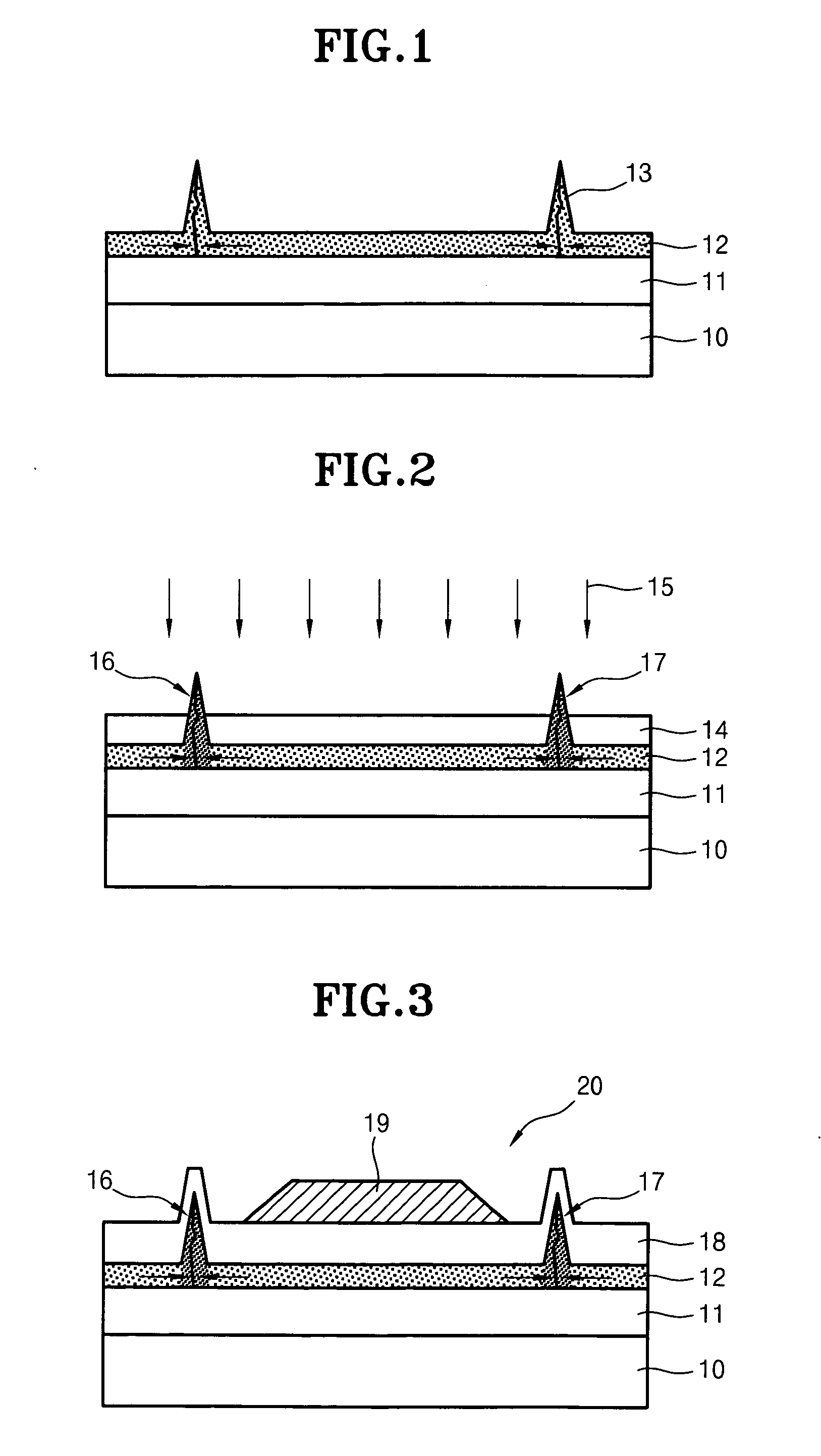Method for forming polycrystalline silicon thin film transistor
- Summary
- Abstract
- Description
- Claims
- Application Information
AI Technical Summary
Benefits of technology
Problems solved by technology
Method used
Image
Examples
Embodiment Construction
[0021] Hereinafter, a preferred embodiment of the present invention will be described with reference to the accompanying drawings.
[0022] First, according to the technical principle of the present invention, an a-Si layer is crystallized into a poly-Si layer by using the SLS method, and ions with a high concentration are then selectively implanted into a protrusion formed during crystallization into the poly-Si layer, so that the protrusion becomes a source / drain electrode and is excluded from a panel area which is a passage through which electrons and holes move.
[0023] As a result, the channel area of the TFT includes pure poly-Si without the protrusion, so that the mobility of the electrons and holes is not degraded when the TFT is operated. Therefore, the present invention can provide a poly-Si TFT having a superior characteristic.
[0024]FIGS. 1 through 3 are sectional views for describing steps of a method for forming a poly-Si TFT according to the present invention, which will...
PUM
 Login to View More
Login to View More Abstract
Description
Claims
Application Information
 Login to View More
Login to View More - R&D
- Intellectual Property
- Life Sciences
- Materials
- Tech Scout
- Unparalleled Data Quality
- Higher Quality Content
- 60% Fewer Hallucinations
Browse by: Latest US Patents, China's latest patents, Technical Efficacy Thesaurus, Application Domain, Technology Topic, Popular Technical Reports.
© 2025 PatSnap. All rights reserved.Legal|Privacy policy|Modern Slavery Act Transparency Statement|Sitemap|About US| Contact US: help@patsnap.com


